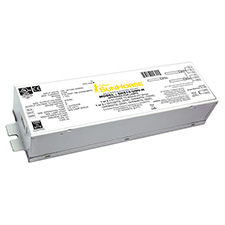
Harnessing the Germ-Fighting Power of Light We Can’t See
Chuck Ross
It’s hard to believe that it was just three years ago that much of the country was on red alert status thanks to Covid. Researchers were still learning more about the new virus, but one thing they were sure of was that it spread through the air, which made air purification systems a new priority for any place people gathered in large numbers. This brought new attention to germicidal ultraviolet (UV) lighting, a niche technology used in some healthcare and water treatment applications. Today, the germicidal UV market is growing quickly – it’s expected to almost triple, globally – and more than double in the United States – in just the next 7 years. But there are some important caveats contractors should know about if they’re called on to install or repair these fixtures.
The human eye can’t see UV light, but that doesn’t mean we don’t feel its impact – it includes the bands of light that cause sunburn and can cause blindness if you look directly at the sun. But the UV-C spectrum has the added benefit of breaking down bacteria, viruses, and other pathogens. That advantage has led lighting developers to create lamps and fixtures that can emit UV-C light for use in settings where anti-microbial conditions are especially important. Today, these can include HVAC units, water purification and sewage treatment systems, and in open air fixtures installed to prevent direct visual access to the light they emit.
UV-C lamps look like old-school fluorescent tubes, but they’re a different technology and need dedicated ballasts to work their best. Some fluorescent models might be compatible, but they won’t have the internal controls to maintain a constant UV output, and lamps using dedicated units will likely last longer, so the systems will be less expensive to operate over time.
Interest in UV-C lighting is still strong, even as Covid has become a much less significant threat, because we’re all now just more aware of the health dangers of airborne bacteria and viruses. A March 2023 report from the market research firm ResearchandMarkets.com estimates US sales will grow more than 16% a year through 2023.
The human eye can’t see UV light, but that doesn’t mean we don’t feel its impact – it includes the bands of light that cause sunburn and can cause blindness if you look directly at the sun. But the UV-C spectrum has the added benefit of breaking down bacteria, viruses, and other pathogens. That advantage has led lighting developers to create lamps and fixtures that can emit UV-C light for use in settings where anti-microbial conditions are especially important. Today, these can include HVAC units, water purification and sewage treatment systems, and in open air fixtures installed to prevent direct visual access to the light they emit.
UV-C lamps look like old-school fluorescent tubes, but they’re a different technology and need dedicated ballasts to work their best. Some fluorescent models might be compatible, but they won’t have the internal controls to maintain a constant UV output, and lamps using dedicated units will likely last longer, so the systems will be less expensive to operate over time.
Interest in UV-C lighting is still strong, even as Covid has become a much less significant threat, because we’re all now just more aware of the health dangers of airborne bacteria and viruses. A March 2023 report from the market research firm ResearchandMarkets.com estimates US sales will grow more than 16% a year through 2023.
Photo courtesy of Fulham



